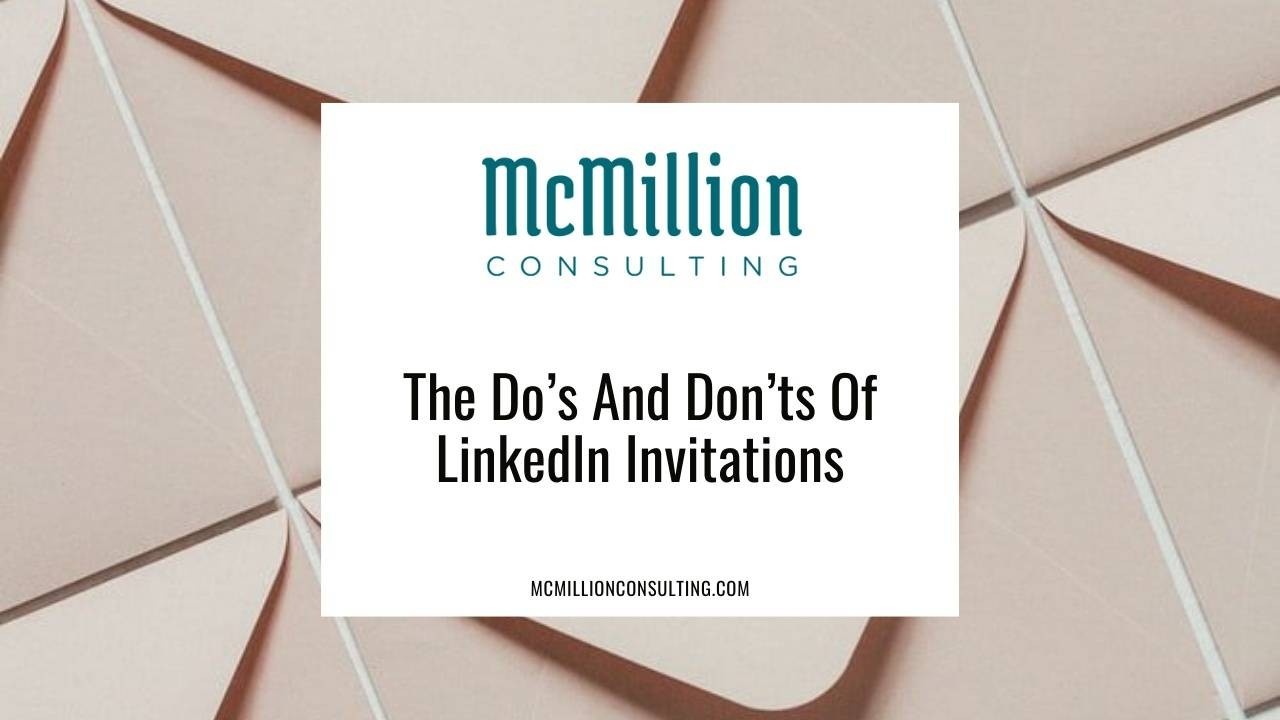The Do’s And Don’ts Of LinkedIn Invitations
Mar 05, 2024
It’s about that time of year again when spring breaks are upon us and the reprieve can make going back to the classroom, well, a little anxiety-inducing. So, in the back-to-school spirit, I want to teach you how to make new friends (read: professional contacts) on LinkedIn.
People join LinkedIn with all sorts of goals, but the reason I hear the most often is “to grow my professional network.” It makes sense—LinkedIn is a fantastic place to make connections. However, clients and friends often come to me frustrated that their attempts to grow their LinkedIn networks have yielded mixed results. When we dissect the problem, more often than not, the issue boils down to how they’re sending connection requests. So, I want to let you in on a few of my top tips for nailing that pesky LinkedIn invitation.
DON’T: Send a connection request without a personalized note.
A savvy LinkedIn user won’t say “yes” to a connection request from just anyone. You must give people a reason to connect with you—whether that’s a similar interest, expertise to share, or a common group.
Note that it takes a few extra clicks to add a note if you request someone from the LinkedIn mobile app. I suggest using the desktop version of LinkedIn instead when building your network. LinkedIn tempts us with many alluring connect buttons throughout the platform, but the only one you should click is within someone's profile so that you are guaranteed the opportunity to add a note.
DO: Add a brief, friendly note on every connection request you send.
An effective connection note is short and sweet. It can be as simple as:
“Hi John, I enjoyed meeting you today at the Greenville Chamber event. Your comments on sales processes were so applicable to what I do. Thanks for sharing! I’d love to stay connected.”
...Then, always include your contact information when you sign-off! By the way, LinkedIn actually limits your note to 300 characters, so there’s no room to send a long-winded monologue.
DON’T: Ask a question in your request note.
Sometimes clients tell me with disappointment that the questions they asked in their connection requests were met with silence. As I often say, asking a question in your connection requests is like going for the marriage proposal before they’ve accepted the first date. Let your recipient accept your invitation first, then follow up to start or continue the conversation.
DO: Give people another way to reach you.
As mentioned earlier, include your contact information to give your recipients the option to take it off of LinkedIn. Remember that the point of a connection request is as simple as it sounds—to make a connection.
DON’T: Try to sell in your connection request.
There’s a time and place to sell, but your connection note is not it. For that, InMail might be an acceptable choice. Better yet, start with an authentic relationship you nurture over time and skip the direct sale message altogether.
DO: Be considerate of people's time and attention.
Whatever your intention in requesting someone on LinkedIn, put yourself in the other person’s shoes. Consider, not just how that person can be a resource to you, but also how you can be helpful. Any healthy relationship, even a LinkedIn one, is a two-way street.
LinkedIn is one entry point for conversation and just one tool in your communication toolbelt. Wherever you build connections, your efforts to be kind and human can be the difference between a future client and impersonal words that can ultimately tarnish your reputation.
While you are making connections, it's important that your LinkedIn profile is an accurate representation of your professional story, your voice, who you serve, etc. If not, it's time to do something about it! Learn about The Profile Transformer™ that more than 1000+ clients have experienced. This done-for-you engagement will catapult your online presence.



